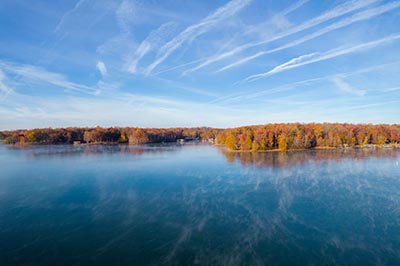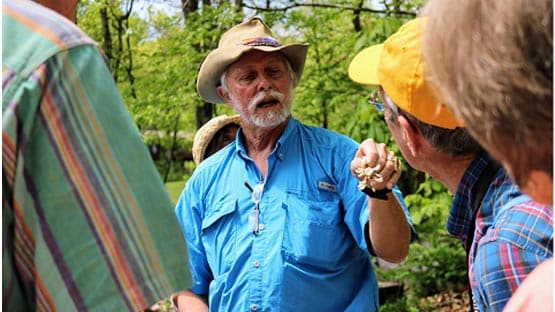
The public is being advised by the Blue Ridge Health District to avoid contact with specific areas of Lake Anna in Orange, Louisa and Spotsylvania counties until algae concentrations return to acceptable levels.
The areas of the lake affected include the North Anna and upper Pamunkey branches including Terry’s Run.
Harmful algae, or cyanobacteria, may cause a skin rash or gastrointestinal illness, such as upset stomach, nausea, vomiting or diarrhea.
People and pets are advised by the BRHD to avoid swimming, windsurfing and stand-up-paddle-boarding, as well as other activities that pose a risk of ingesting water. Boating may continue with proper precaution in advisory areas.
The current lake areas to avoid include include:
- Pamunkey Branch – Upper (including Terry’s Run) and Middle
- Upper – From the upper inundated waters of the Pamunkey to the confluence with Terry’s Run
- Terrys Run – from the upper inundated waters of Terry’s Run to the confluence with the Pamunkey Branch
- Middle – From the confluence of Terry’s Run with Pamunkey Branch to Rt. 612 (Stubbs Bridge)
- North Anna Branch – Upper and Middle
- Upper – From the upper inundated waters to the Rt. 522 Bridge.
- Middle – From the Rt. 522 Bridge, to include Rt. 719 (Holladay Bridge), to Lumsden Flats at Rose Valley Dr.
The samples collected at the Lake Anna State Park beach indicated cyanobacteria densities were at acceptable levels and do not necessitate a swimming advisory. Cyanobacteria and cyanotoxins were detected at this site, but were well below safe swimming levels.
Algae blooms can occur when warm water and nutrients combine to make conditions favorable for algae growth. Most algae species are harmless, however, some species may produce irritating compounds or toxins. Avoid discolored water or scums that are green or bluish-green because they are more likely to contain toxins.
The Virginia Harmful Algal Bloom Task Force, which includes the Virginia Department of Health, the Virginia Department of Environmental Quality, and the Old Dominion University Phytoplankton Laboratory, will continue to monitor water quality in the lake.
In general, advisories will be lifted following two consecutive test results with acceptable levels for algal cell counts and/or toxin concentration. An advisory may be lifted or maintained at the discretion of the health department.
To prevent illness:
- Avoid contact with any area of the lake where water is green or an advisory sign is posted
- Not allow children or pets to drink from natural bodies of water
- Keep children and pets out of the areas experiencing a harmful algae bloom and quickly wash them off with plenty of fresh, clean water after coming into contact with algae scum or bloom water
- Seek medical/veterinarian care if you or your animals experience symptoms after swimming in or near an algal bloom
- Properly clean fish by removing skin and discarding all internal organs, and cooking fish to the proper temperature to ensure fish fillets are safe to eat
Contact the Harmful Algal Bloom Hotline at (888) 238-6154 if you suspect you experienced health-related effects following exposure to a bloom
To learn more about harmful algae blooms, safe swimming tips, and/or to report a HAB or scum sighting, visit www.SwimHealthyVA.com.










